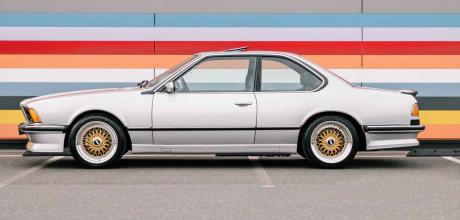1987 BMW M6/M635CSi E24
BMWs can be awfully confusing when it comes to their badging. Back in the day, a 323i E21 simply meant that it was a 3 Series body with a 2.3-liter engine. A E12 535i was the 5 Series body with a 3.5-litre engine — simple, right? M3s were all two-door coupes; except, they are four-door sedans now; and the M4 is now the M3 coupe; the 320i may have a 2.2-liter engine; and the 323i E21 could have the 2.5-liter — confused? Me, too. (And, perhaps, so is BMW!)
Whether it be the BMW 3.0 CSL E9 — that was never badged as an M-car — or the M3 — where every iteration was badged as an M-car — they all share a common DNA. In the case of the 6 Series M-car, it is both: badged as the M635CSi in European markets and the M6 in US and Japan. However, no matter what is written on the outside of the box, so to speak, the E24 BMW M635CSi / M6 is 100% M-Car in every way that counts.
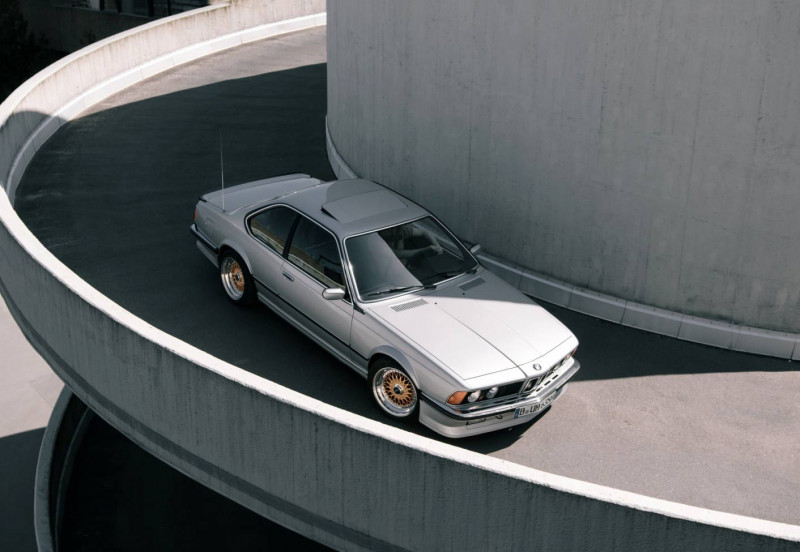
The BMW M division does not need much of an introduction. And most would be aware that it is a division of BMW tasked with producing performance models. Established in 1972, the first project was the 3.0 CSL E9 — then, onto the first M-badged vehicle, the BMW M1 E26, in 1978. Ever since then, the division has created the hot M version of nearly every model BMW has produced.
The M635CSi E24, or M6 (let’s call it the M6 for ease), was developed using the E24 6 Series coupe produced from 1976 to 1989. The 6 Series E24 was released with a variety of engine sizes and performance: from the 628CSi E24 using a 2.8-liter engine, up to the 635CSi with its 3.5-liter unit. In 1983, the BMW M Division was tasked with waving its magic across the 6 Series platform — subsequently, releasing the M6. The M could well have stood for “mighty” in this context because the M6 car was a leap forward in performance and handling over its lesser brethren.

First up, and the heart of the M6, was the 3.5-liter engine. It was an upgraded version of what was used in the mighty M1 race and production models. M Division upgraded the straight six from a single overhead camshaft to DOHC, also doubling the valve count to 24. The mechanical Kugelfischer injection system of the M1’s engine was replaced with Bosch’s Motronic electronic injection. The tuned intake system was matched to six visually-stunning throttle bodies; and the exhaust — a series of intertwined headers flowing into a dual-exhaust system. The European model had no catalytic convertors and made 286 horsepower, as opposed to the US version which had a modified engine strangled by catalytic converters and a lower compression ratio — effectively de-tuned to 256 horsepower. Nevertheless, a significant output from 3.5 liters in the 1980s. Today, while most modern engines’ components are hidden by covers and shrouds, back in the M6’s day, exposing a set of six throttle bodies all connected by levers and rods and functioning as one was sheer mechanical art — and six perfectly synchronised butterflies opening in perfect harmony was a joy to hear.
The M-series engine, designed by Paul Roche, comes right from the M1 E26 supercar and is truly glorious. Roche’s other engine designs include gems such as the 1500-horsepower Brabham-BMW F1 engine, and the V12 6-liter masterpiece in the original McLaren F1. Roche was one of the century’s great engine designers and can be compared to such luminaries as Vittorio Jano (Ferrari, Fiat, Alfa Romeo) and Hans Mezger (Porsche).
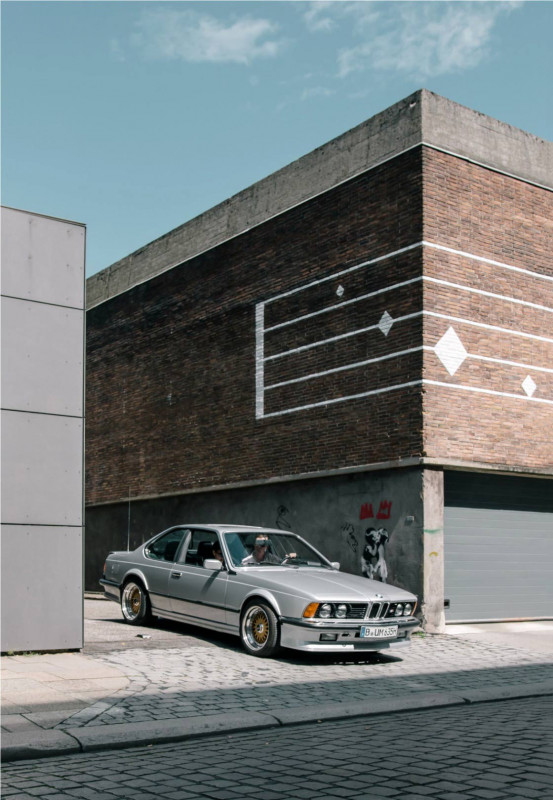
The M6 engine was well developed and strengthened where needed. Reportedly, bombproof- it was well matched to a toughened Getrag close-ratio five-speed and trick LSD, capable of locking up to 25%. A revised braking system with four-pot callipers, a sports Bilstein dampers, and uprated roll bars rounded out the performance makeover. The battery was relocated to the rear for better weight distribution. Side skirts, a rear spoiler, a front lip spoiler, wider 15-inch BBS wheels, wheel-arch extensions, and a central free-flowing exhaust were all added: giving the M6 a stylish and sporty appearance. The body styling of the 6 Series coupe was led by BMW’s chief designer at the time, Paul Bracq. One owner’s perspective on the design came from Martin: “My favourite details are the obvious shark nose, the Hofmeister kink, and all the fine body details.” Martin explained that the true mastery of Paul Bracq’s design is in its coherence: it looks stunning from every angle, and has perfect proportions. “That’s very rare in the automotive world; and, especially, rare with bold and passive-aggressive baselines — also it’s one of the few classic cars which look better with a factory spoiler.”
In a previous life, Bracq was responsible for the design of some very beautiful and influential Mercedes-Benzes; including the “Pagoda” 230/250/280 SL W113, and the magnificent SE Coupes of the 1960s and early 1970s. The ‘Hofmeister kink’ design — adopted by Bracq for the 6 Series — at the base of the rear pillars, is a throwback to the early 2000CS models originally designed by William Hofmeister. Internally, an angled gauge pod and front fascia was a design which developed the concept of the driver-angled dashboard. The driver’s position is rewarding with a unique M steering wheel, gear lever, pedals, and electrically-adjustable sports seats: all this adds up to ergonomic perfection. It’s clearly a high-end, prestigious vehicle with similar pricing to a Ferrari — while employing a softer suspension setup for grand touring.
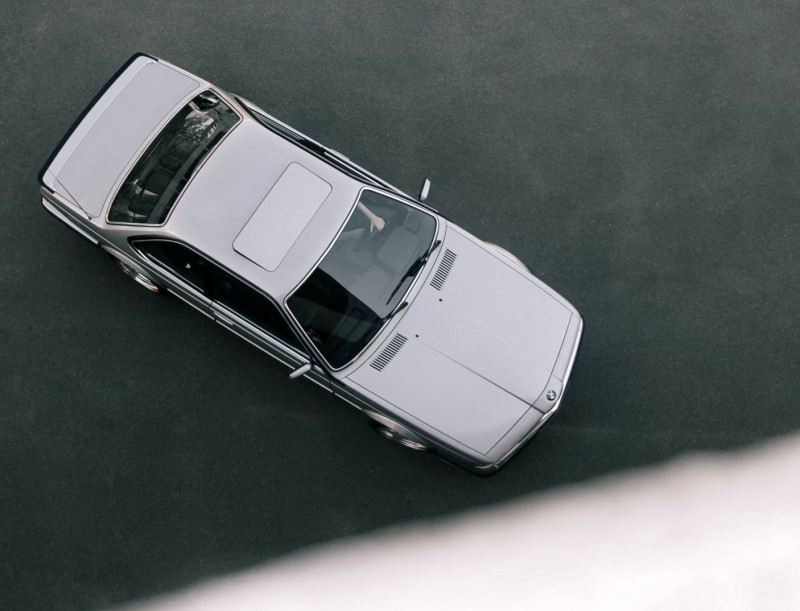
Model variations over the M6’s lifetime were purely cosmetic iterations. The “Shadowline” model sported blacked-out chrome trim on the full exterior. While a later “Highline” model with a minor facelift came in 1987: featuring luxurious Nappa leather on most interior surfaces. In total, 5,855 M6s were produced: 1,677 of which went to North America, and the majority sold in Europe. Right-hand-drive models are rare with only 524 being produced for the Japanese, English, and Australian markets — and, no doubt, a much smaller number survive. Production of the M6 ceased in 1989; and it wasn’t until 16 years later, in 2005, that the M6 badge was resurrected.
THE M-SERIES ENGINE, DESIGNED BY PAUL ROCHE, COMES RIGHT FROM THE M1 SUPERCAR AND IS TRULY GLORIOUS.
The non-M version 635CSi was used for motorsport; and, prominently, run by well- marketed teams — such as John Player Special (JPS) and Schnitzer. Particularly successful in endurance events such as the 24 Hours of Spa, Nurburgring 24-Hour, and the James Hardie Bathurst races. Although these race cars were not initially based on the M Division models, the factory M6 engine was almost universally adopted in 1983 and transplanted into them. The 24-valve head and six throttle-body design flowed significantly more air; and, in the race trim, maximum power approached 400 brake horsepower. A highlight for the JPS BMW team was the 1985 Australian Endurance Championship with its M-equipped 635CSi — driven by Jim Richards — dominating the series. It was to be a one-two victory for the JPS team: the second of the all-black JPS 635CSi E24 cars was driven by team member Tony Longhurst — beating Peter Brock, Dick Johnson, and Colin Bond to the podium. Both these winning cars benefited from the incredible M6 engine, pleasuring the spectators as they sailed by at well over 8000rpm and just under 190 miles per hour.
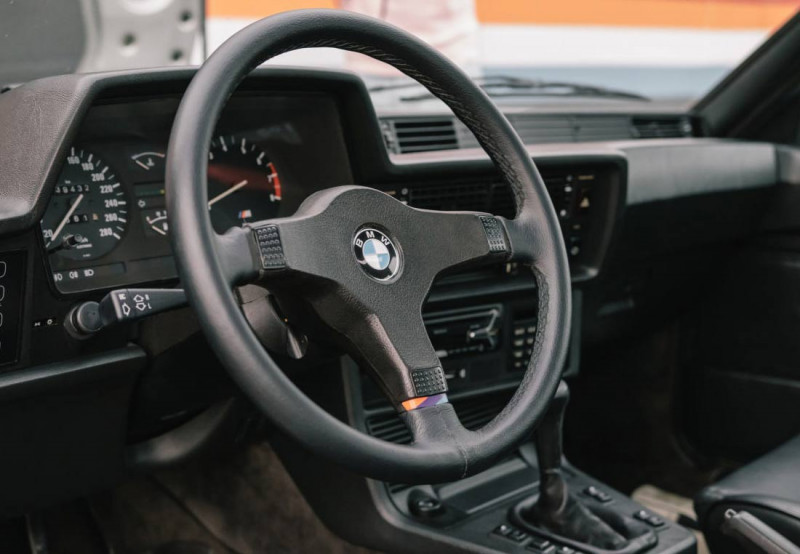
Driving the 1980s M6 today is delightful with its light, but precise, shift; jewel-like engine which makes sophisticated, yet aggressive, noises; nicely-damped suspension; precise turn-in; and comfortable ride. The M6 cruises effortlessly and would be at home on the autobahn: technically capable of speeds above its restricted 155 miles per hour. The exhaust has a sensuous note when easily cruising up to about 3500rpm — after which, the car steps up a level in exhaust noise and performance: adding a harder and sportier tone when it reaches maximum power at redline.
PRODUCTION OF THE M6 CEASED IN 1989; AND IT WASN’T UNTIL 16 YEARS LATER, IN 2005, THAT THE M6 BADGE WAS RESURRECTED.
Martin’s example of the M6 is in stunning condition. “To be honest, I never expected to find one in better condition than average.” Many of us know, after trolling through webpage after webpage that pristine examples like this have become extremely rare. Martin said: “When I found it, I knew I had to be quick. I saw it, I heard it, I bought it!” Visibility is truly panoramic, with the car’s upright seating and large glasshouse. It is a practical machine, too — with rear seats suitable for children or even adults for short distances, and a large boot. To drive this 30-year-old car, you really do wonder about automotive progress. Clearly, new vehicles are faster and safer, and have all the connectivity gadgets and integrated apps you could imagine. However, compared with a modern 6 Series, the E24 has more room, infinitely better visibility, more storage space, far better ride, looks better, sounds better, and when you open the bonnet, you see a gorgeous engine which has a genuine motorsport heritage.
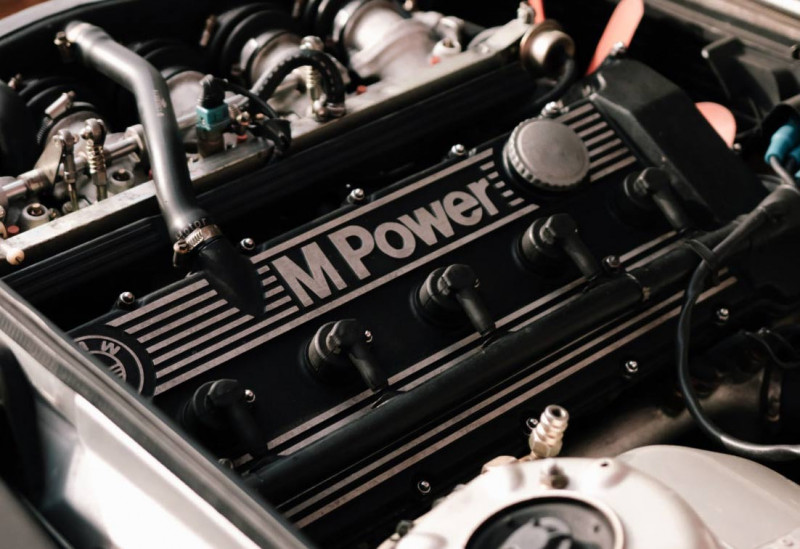
THE TRUE MASTERY OF PAUL BRACQ’S DESIGN IS IN ITS COHERENCE: IT LOOKS STUNNING FROM EVERY ANGLE, AND HAS PERFECT PROPORTIONS.
Martin said: “BMW had always been one of the more attractive automakers to me when growing up. They’re still primarily drivers’ cars; and, unlike other brands today, one can still trace their DNA of a new M sports car back to the early 1980s classics, like my M6.” Present-day M-cars, though faster, are almost universally sporting turbochargers. Extracting more power is easily performed with increased boost and some software tweaks. Conversely, you cannot help admiring the much more complex methods employed by past M Division engineers to extract the kind of power they did from the M6 without detracting from its drivability. There is literally nothing like the instant response and aural stimulation you get when encouraging an M6’s straight six to 7000rpm and beyond — and sadly, due to ever- tightening emission standards, may never be again.


